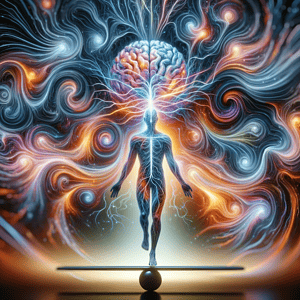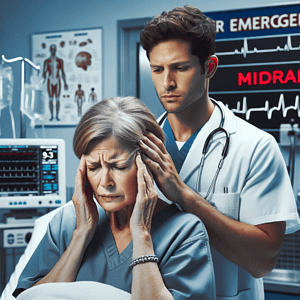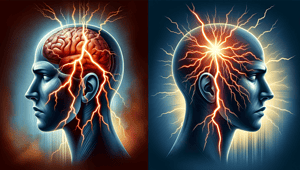Migraine is a complex neurological condition that affects millions of people worldwide. While migraines are commonly associated with severe headaches, a subset of individuals experience additional symptoms such as dizziness and vertigo. These symptoms fall under the category of vestibular migraines, a condition characterized by disturbances in the vestibular system. In this article, we will explore the connection between migraines, dizziness, and vertigo, delve into the scientific explanations behind this phenomenon, discuss potential treatment options, and provide lifestyle adjustments to effectively manage vestibular migraines.

Understanding Vestibular Migraines
Vestibular migraines are a specific subtype of migraines that involve disturbances in the vestibular system, responsible for maintaining balance and spatial orientation. Unlike typical migraines, which primarily manifest through headaches, vestibular migraines primarily present with dizziness, vertigo, and other vestibular symptoms. Vertigo refers to a sensation of spinning or whirling, while dizziness refers to a feeling of unsteadiness or disorientation.
Overview of Vestibular Migraines
Vestibular migraines are estimated to affect approximately 1% of the general population, making them a relatively common condition. They tend to occur more frequently in women, and their onset often coincides with a history of migraines or a family history of migraines. The symptoms and duration of vestibular migraines can vary significantly from person to person, but they usually involve recurrent attacks of vertigo or dizziness lasting at least a few minutes to several hours.
The Science Behind Vestibular Migraines
The exact causes of vestibular migraines are not yet fully understood, but research has provided insights into potential underlying mechanisms. One theory suggests that brainstem dysfunction contributes to the development of vestibular migraines. The brainstem plays a crucial role in regulating balance and sensory information. Dysfunction in this area can lead to disruptions in the vestibular system, resulting in vestibular migraines.
Another contributing factor to vestibular migraines is changes in blood flow. Altered blood flow in the brain can activate migraine pathways and affect the vestibular system. This mechanism may explain why some individuals experience vestibular migraines during episodes of intense migraines.
Additionally, genetics may play a role in predisposing individuals to vestibular migraines. Studies have identified specific genetic markers that increase the likelihood of developing vestibular migraines. Further research is needed to fully understand the genetic component associated with this condition.
Diagnosing Vestibular Migraines
Accurate diagnosis plays a crucial role in effectively managing vestibular migraines. Medical professionals evaluate a combination of medical history, physical examination, and specific diagnostic tests to confirm the presence of vestibular migraines.
During the evaluation, medical history and symptom assessment are important components. The healthcare provider will inquire about the frequency, duration, and intensity of migraines, as well as the presence of dizziness and vertigo during or independently of migraines. A family history of migraines may also be relevant.
Objective tests and examinations may be employed to further support the diagnosis. Audiological and vestibular function tests measure the functioning of the inner ear and the vestibular system. These tests can help determine if the symptoms are related to vestibular migraines or if underlying ear conditions are present. Imaging studies, such as magnetic resonance imaging (MRI) or computed tomography (CT) scans, may be utilized to rule out other potential causes of vestibular symptoms.
Treatment Approaches for Vestibular Migraines
The management of vestibular migraines typically involves a combination of pharmacological treatments, lifestyle modifications, and alternative therapies. The goal is to reduce the frequency and severity of attacks and improve overall quality of life.
Medications
Various medications are available to help prevent and alleviate the symptoms of vestibular migraines. The choice of medication depends on the individual’s specific symptoms, medical history, and response to treatment. Some commonly prescribed medications include:
- Antiepileptic drugs: Medications such as topiramate or valproic acid may be prescribed to help prevent vestibular migraines.
- Beta blockers: Medications like propranolol or metoprolol can be used to reduce the frequency and severity of attacks.
- Antidepressants: Tricyclic antidepressants or selective serotonin reuptake inhibitors (SSRIs) may be prescribed to manage both migraines and associated mood disturbances.
- Vestibular suppressants: In some cases, short-term use of vestibular suppressants such as meclizine or benzodiazepines may be recommended to alleviate severe vertigo symptoms during attacks.
Lifestyle Modifications
Alongside medication, certain lifestyle adjustments can significantly contribute to the management of vestibular migraines. These modifications can help reduce the frequency and severity of attacks and improve overall well-being. Consider the following recommendations:
- Trigger management: Identifying and avoiding triggers that may worsen migraines and vestibular symptoms is essential. Common triggers include stress, certain foods (e.g., chocolate, cheese), hormonal changes, lack of sleep, and changes in weather patterns.
- Dietary adjustments: Some individuals find relief by adopting a migraine-friendly diet, which involves avoiding trigger foods and maintaining a balanced and healthy eating plan. It is important to consult with a healthcare professional or registered dietitian before making significant dietary changes.
- Sleep hygiene and stress reduction: Regular sleep patterns, adequate rest, and stress reduction techniques such as meditation, deep breathing exercises, and yoga can contribute to overall well-being and help minimize the occurrence of vestibular migraines.
Vestibular Rehabilitation Therapy
Vestibular rehabilitation therapy (VRT) is a specialized form of physical therapy designed to address vestibular dysfunction and improve balance and stability. VRT involves a series of exercises and maneuvers tailored to the individual’s specific symptoms. By gradually challenging the vestibular system, VRT aims to retrain the brain to adapt and compensate for abnormalities, ultimately reducing the impact of vestibular migraines on a person’s daily life.
Complementary and Alternative Therapies
Additional treatment options for vestibular migraines include complementary and alternative therapies. While research examining the effectiveness of these therapies is ongoing, some individuals find relief from practices such as acupuncture, chiropractic care, and herbal supplements. It is important to discuss these options with healthcare professionals and ensure their safe integration into the overall treatment plan.
Coping Strategies for Living with Vestibular Migraines
Living with vestibular migraines can be challenging, both physically and emotionally. The unpredictable nature of the condition and the impact it can have on daily life can lead to feelings of frustration, anxiety, and isolation. Developing coping strategies can help individuals manage and navigate their vestibular migraines more effectively. Consider the following approaches:
- Emotional support: Building a support network of understanding individuals, such as friends, family, or support groups, can help provide emotional support and alleviate feelings of isolation.
- Professional help: Seeking guidance from healthcare professionals, including neurologists, otolaryngologists (ear, nose, and throat specialists), or mental health professionals, can help in understanding and managing vestibular migraines effectively.
- Coping mechanisms: Developing individual coping mechanisms, such as deep breathing exercises, mindfulness practices, or relaxation techniques, can help manage stress and reduce the impact of vestibular migraines on overall well-being.
- Lifestyle adjustments: Adopting a healthy lifestyle that includes regular physical activity, maintaining a balanced diet, prioritizing sleep hygiene, and managing stress levels can be beneficial in managing vestibular migraines.
Research and Advancements in Vestibular Migraine Treatment
Significant progress has been made in research and understanding vestibular migraines. Ongoing studies and clinical trials focus on advancing knowledge about the underlying causes, investigating new treatment options, and improving the overall management of the condition. Some areas of research include evaluating the effectiveness of novel medications, exploring targeted therapies for specific vestibular abnormalities, and investigating the role of specific genetic markers in vestibular migraines. These research efforts aim to provide individuals with more effective and tailored treatment options in the future.
Conclusion
Vestibular migraines are a complex condition characterized by dizziness and vertigo alongside traditional migraine symptoms. Understanding the scientific explanations behind vestibular migraines, obtaining an accurate diagnosis, and implementing appropriate treatment strategies are crucial for effectively managing this condition. With a multidimensional approach that includes medications, lifestyle adjustments, and alternative therapies, individuals can find relief from symptoms, reduce the frequency and severity of attacks, and improve their overall quality of life. Remember to consult with healthcare professionals for personalized guidance and support on your journey with vestibular migraines.




